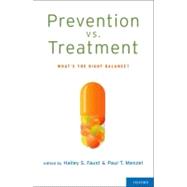
Note: Supplemental materials are not guaranteed with Rental or Used book purchases.
Purchase Benefits
What is included with this book?
| Introduction | p. 2 |
| Six Rules of Raw Fight Club | p. 13 |
| Why Go Raw Extreme? | p. 21 |
| How to Go Raw Extreme | p. 33 |
| Raw Extreme Recipes from A to Z | p. 87 |
| Index | p. 151 |
| Intermediate-Strength Transparent-Access Theories | p. 156 |
| The Tagging Hypothesis | p. 156 |
| Attitudinal Working Memory | p. 166 |
| Awareness of Action | p. 178 |
| The Active Mind | p. 187 |
| Conclusion | p. 190 |
| Inner Sense Theories | p. 192 |
| Inner Sense and Mindreading: Three Theories | p. 192 |
| Developmental Evidence | p. 203 |
| Emotional Mirroring | p. 209 |
| Unsymbolized Thinking | p. 214 |
| Conclusion | p. 222 |
| Mindreading in Mind | p. 223 |
| The Theoretical Options | p. 223 |
| Why Mindreading Matters | p. 230 |
| Evidence of Early Mindreading | p. 240 |
| Explaining the Gap | p. 248 |
| Mindreading in Animals | p. 254 |
| Conclusion | p. 259 |
| Metacognition and Control | p. 261 |
| Inner Sense versus ISA | p. 261 |
| Human Metacognition | p. 263 |
| Human Meta-Reasoning | p. 272 |
| Animal Metacognition | p. 278 |
| Epistemic Emotions in Humans and Animals | p. 288 |
| Conclusion | p. 292 |
| Dissociation Data | p. 293 |
| Schizophrenia | p. 293 |
| Autism | p. 301 |
| Alexithymia | p. 309 |
| Images of the Brain | p. 311 |
| Conclusion | p. 324 |
| Self-Interpretation and Confabulation | p. 325 |
| The Limits of Introspection | p. 326 |
| When Will the Two Methods Operate? | p. 333 |
| Confabulated Decisions, Intentions, and Judgments | p. 339 |
| Self-Perception Data | p. 345 |
| Dissonance Data | p. 356 |
| Concluding Comments | p. 365 |
| Conclusion and Implications | p. 368 |
| Summary: The Case Against Transparent Access to Attitudes | p. 368 |
| Eliminating Most Kinds of Conscious Attitude | p. 373 |
| Eliminating Conscious Agency | p. 379 |
| Rethinking Responsibility | p. 381 |
| Conclusion | p. 383 |
| References | p. 384 |
| Index of Names | p. 419 |
| Index of Subjects | p. 434 |
| Table of Contents provided by Ingram. All Rights Reserved. |
The New copy of this book will include any supplemental materials advertised. Please check the title of the book to determine if it should include any access cards, study guides, lab manuals, CDs, etc.
The Used, Rental and eBook copies of this book are not guaranteed to include any supplemental materials. Typically, only the book itself is included. This is true even if the title states it includes any access cards, study guides, lab manuals, CDs, etc.